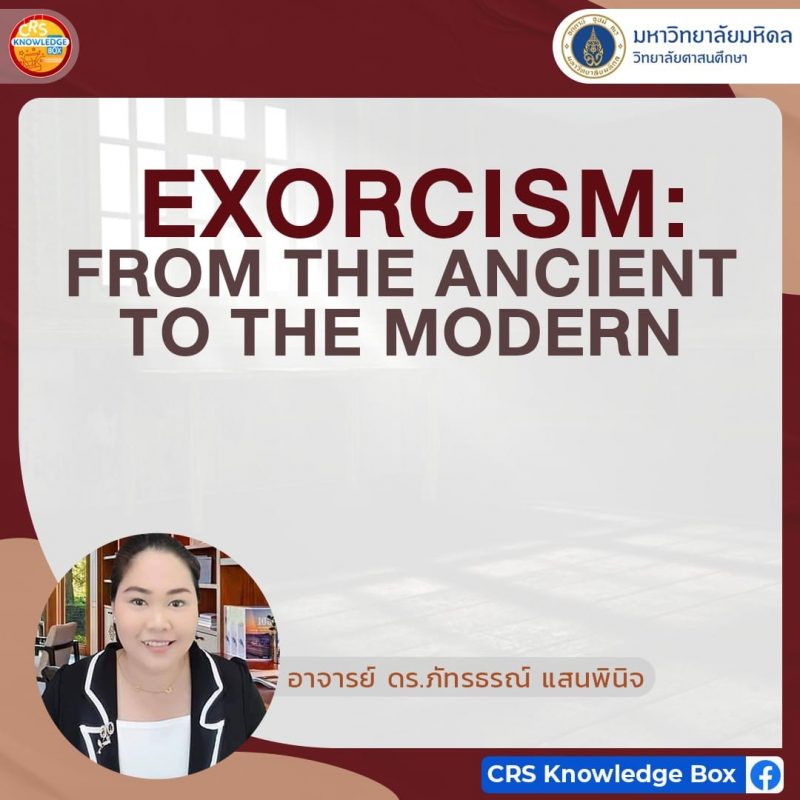Exorcism is a religious ritual or spiritual practice to expel evil spirits from persons. This ritual has taken various forms in religious history, ranging from shamanistic activities to formal religious events. This article investigates the brief topic of exorcism, covering its historical beginnings as well as a wide range of cultural and religious beliefs.
Exorcism has historical roots in shamanistic beliefs when rites and spells were performed to fend off bad spirits. Demons and witchcraft were believed responsible for inflicting disease and misfortune in ancient Mesopotamia. The āšipu or ancient exorcist was a skilled ritual expert who had a variety of equipment as well as the gods’ protection. In the Vedic tradition in India, The Atharvaveda is a compilation of spells to fend against evil and suffering. In Judaism, there are many instances in the Book of Tobit that provide the earliest detailed depictions of exorcism. In the antiquities of the Jews, Josephus records cases of possession and exorcism. According to his depiction, exorcism entailed burning plants and immersing the afflicted individual in water.
According to The New Testament of the Bible, Jesus performed multiple exorcisms of demonic spirits in first-century Palestine, including one in a synagogue in Capernaum. Jesus entered the congregation on the Sabbath and gave a sermon. His teaching was loaded with authority, which astounded the audience. A man with an unclean spirit screamed out, recognizing Jesus as the “Holy One of God” Jesus chastised the evil spirit, commanding it to leave the man. The spirit convulsed the man but left him, astounded at Jesus’ authority over evil spirits. (Mark 1:21-26,5:1-20, Matthew 8:26-39, Luke 8: 26-39)
In Judaism and Christian traditions, It serves as a ceremonial adjuration to expel demons. The practices of preliterate cultures, while diverse, often serve as a form of exorcism. Islamic tradition addresses possession by evil spirits (Shaitan) through exorcism (ṭard or dafʿ). Islamic exorcisms might consist of the treated by sprinkling of holy water and Specific verses from the Quran to invoke God’s help.
However, In contemporary perspectives on exorcism in modern times, the importance of exorcism has waned in many religious groups due to advancements in psychology and a better understanding of mental health. Many cases that were once attributed to demonic possession are now recognized as manifestations of mental illness and are treated accordingly. The Roman Catholic Church strictly regulates exorcism through canon law. In religion, exorcism is accepted as a means to strengthen faith and lead individuals toward religious devotion without hesitation in their faith in god.
The Regina Apostolorum Pontifical Atheneum in Italy hosted intensive theoretical and practical training on the Ministry of Exorcism. Father Amorth was a well-known exorcist who organized it after noticing that there were Dioceses where exorcisms were not being taken seriously and individuals were being ignored or harmed. He organized the course, which received papal approval in Rome and is now semi-official. However, they received a firsthand look at the realities of modern exorcisms.
The Case Study of Transforming Rituals in Thai/ Chinese Theravada of Indonesia’s Jesada Buaban (2021: 300) describes Thai monks adapt exorcism rituals to cater for the needs of the Chinese community. These monks take on the role of the Javanese magicians, addressing issues related to ghosts and black magic, ultimately benefiting the well-being and businesses of Chinese patrons. Thai monks have a unique role in countering black magic, helping those who have fallen victim to curses or dark spells. They are compassionate and non-harming, opting to counteract black magic by persuading malevolent spirits to do good in the traditional buddhist way. This approach is widely embraced in this region because it complements sacred ceremonies and black magic can be dispelled by the monks. Theravada monks maintain their central role within Mahayana communities, even though the transformation of rituals does not strictly adhere to the Theravada tradition. On the contrary, it represents a syncretic blend form of ritual, in which Javanese, Chinese, Mahayana, and Theravada traditions are mixed.
In recent years, the representation of exorcism in popular culture has been a subject of heightened academic interest, shedding light on the complex interplay between religious traditions, psychological perceptions, and societal fascination with supernatural beings. In addition, the arrival of devotionalism and Satanic devotion was also transmitted through horror films. Exorcism has impacted religious civilization and flourishing popular culture, particularly in the Film industry. Films are one of the soft power tools used to promote openness and multiculturalism.
